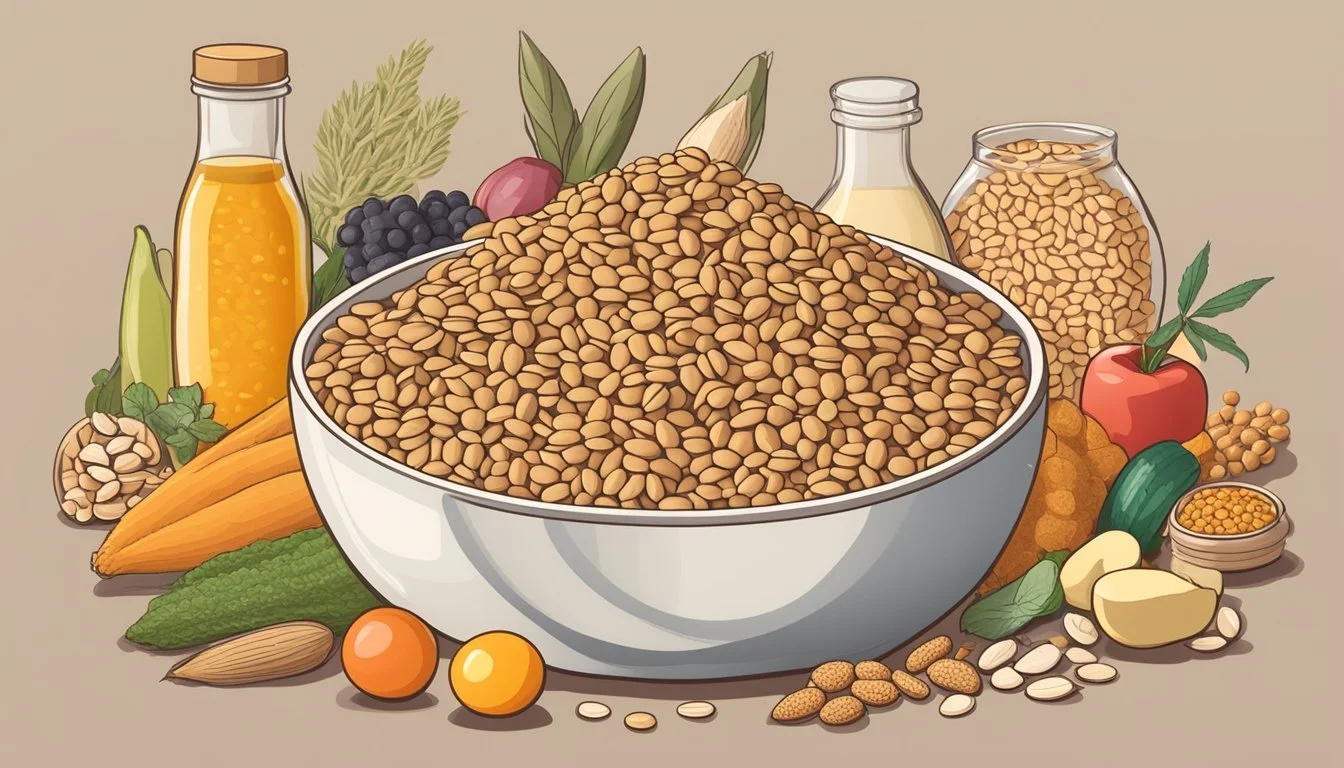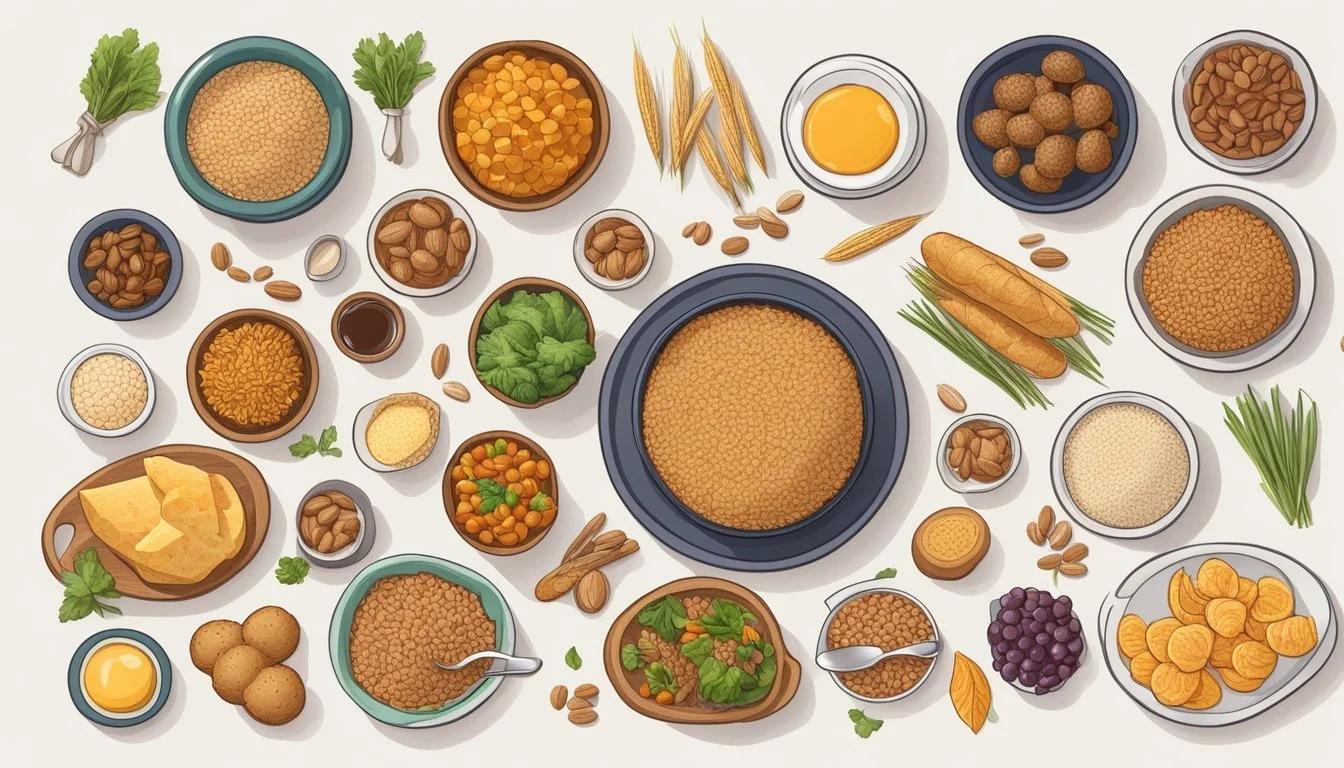Can Diabetics Eat Spelt?
Understanding Its Benefits and Risks
Spelt, an ancient grain, offers a nutritious option for those managing diabetes. Known for its nutty flavor and rich nutrient profile, spelt can be an appealing alternative to traditional wheat. Many people with diabetes are in search of grains that do not spike blood sugar levels excessively.
Yes, people with diabetes can eat spelt, as it provides a moderate glycemic index and is packed with essential nutrients. Spelt is high in fiber and protein, which helps in stabilizing blood sugar levels. Its composition also includes vitamins and minerals beneficial for overall health, making it a well-rounded addition to a diabetic diet.
Including spelt in meals can be a versatile and healthful choice. Whether it's used in bread, pancakes, or other baked goods, spelt flour can often substitute for regular flour, providing both variety and health benefits. By incorporating spelt, individuals with diabetes can enjoy tasty dishes without compromising their blood sugar management.
Understanding Diabetes and Dietary Considerations
Managing diabetes involves careful consideration of dietary choices, particularly with carbohydrates, grains, and fiber. Each of these elements plays a specific role in controlling blood sugar levels and overall health.
The Role of Carbohydrates in Blood Sugar Management
Carbohydrates directly influence blood sugar levels. For individuals with diabetes, maintaining a balanced intake of carbs is crucial. Foods with high glycemic index (GI) cause rapid spikes in blood sugar, which can be challenging to manage.
Low-GI foods, such as whole grains, lead to slower, more controlled increases in blood sugar levels. This helps in avoiding sudden spikes and dips, making it easier to maintain stable A1C levels.
Importance of Choosing the Right Grains
Choosing the right grains can make a significant difference in blood sugar management for individuals with diabetes. Whole grains like spelt have a lower glycemic index compared to refined grains, which helps in moderating blood sugar levels.
Whole grains:
Contain more nutrients.
Have higher fiber content.
Lead to slower absorption of carbohydrates.
These benefits make whole grains a better option for maintaining stable insulin and blood sugar levels.
Fiber's Impact on Blood Sugar Levels
Fiber is a crucial component of a diabetes-friendly diet. It slows the digestion of carbohydrates, resulting in a more gradual increase in blood sugar after meals. Diets high in soluble fiber have been shown to improve blood sugar levels.
Fiber-rich foods include:
Fruits
Vegetables
Whole grains
Legumes
Consuming ample fiber supports better blood sugar control and promotes a feeling of fullness, aiding in weight management, especially crucial for those with type 2 diabetes.
An Overview of Spelt
Spelt is an ancient grain similar to wheat and boasts a range of nutrients that can contribute positively to a healthy diet. It is rich in fiber, protein, and several important vitamins and minerals.
Nutritional Profile of Spelt
Spelt provides an excellent nutritional profile that includes fiber, protein, and essential vitamins and minerals. It contains about 5.7 grams of protein per 100 grams, making it a good source of plant-based protein. Additionally, spelt is high in fiber, which helps regulate digestion and can contribute to blood sugar control.
Key nutrients in spelt include magnesium, iron, and zinc. These minerals are crucial for various bodily functions, including maintaining strong bones and supporting the immune system. The grain also contains several B vitamins, which play a role in energy metabolism and overall health.
Comparison to Other Grains and Flours
When compared to other grains and flours, spelt stands out for its nutrient density. It has a higher protein content compared to modern wheat and provides more fiber than many refined grain products. This makes it a healthier choice for those looking to increase their fiber intake.
Spelt also contains gluten, like wheat, so it is not suitable for those with celiac disease. Its glycemic index is lower than that of refined flours, which can help in better managing blood sugar levels. In comparison to oat flour, which is another nutritious option, spelt is richer in certain minerals like iron and magnesium.
Spelt flour can be used in a variety of recipes, providing a nutritious alternative to conventional wheat flour, while also adding a slightly nutty flavor to baked goods.
Spelt's Place in a Diabetic Diet
Spelt, an ancient grain, can be a beneficial addition to a diabetic diet. Its nutritional profile includes significant fiber content and a relatively low glycemic index, making it a suitable option for managing blood sugar levels.
Evaluating Spelt's Glycemic Index
Spelt has a medium glycemic index which is lower compared to other refined flours. This indicates that it causes slower and more gradual increases in blood sugar levels. Incorporating spelt flour can be a better choice compared to traditional whole wheat flour for individuals maintaining stable blood sugar. This can help in avoiding sharp spikes in blood sugar levels that are common with high glycemic foods.
Balancing Spelt in Meal Planning
When integrating spelt into meal planning, it is important to focus on portion control. Spelt flour can be used in various recipes such as breads, pancakes, and pastas. Balancing spelt with other whole grains and foods rich in fiber and protein can enhance its benefits. This combination can help in maintaining a more stable glycemic response, aiding in better blood sugar management for diabetics.
Health Benefits Beyond Diabetes Management
Spelt offers numerous advantages that go beyond managing diabetes, contributing significantly to heart and digestive health.
Heart Health and Cholesterol Management
Spelt can play a pivotal role in promoting heart health and managing cholesterol levels. Rich in fiber, spelt helps reduce LDL cholesterol, which is linked to cardiovascular diseases. According to the American Heart Association, higher fiber intake is associated with a lower risk of heart disease.
Moreover, spelt contains magnesium, a mineral critical for cardiovascular function. Magnesium aids in regulating blood pressure, further supporting heart health. This nutrient-rich grain also helps improve overall heart function by maintaining healthy blood vessels and preventing plaque buildup.
Digestive Health and Nutrient Absorption
Spelt supports digestive health due to its high fiber content. Fiber is essential for maintaining regular bowel movements and preventing constipation. Improved digestion leads to better nutrient absorption, ensuring that the body gets the most out of the food consumed.
The presence of whole grains in spelt enhances its benefits for digestive health. Whole grains like spelt provide essential nutrients, including vitamins and minerals, that are crucial for maintaining a healthy digestive tract. Increased intake of these nutrients can improve overall gut health, promoting a balanced microbiome and boosting immunity.
Incorporating Spelt into Special Diets
Spelt can be a versatile addition to various specialized diets, whether for gluten sensitivities, weight management, or adapting common recipes. Its nutritional profile makes it a valuable ingredient for those looking to diversify their grain intake.
Spelt for Gluten Sensitivities
Spelt contains gluten, but it is often easier to digest for some individuals with non-celiac gluten sensitivity. Unlike modern wheat, spelt has retained a simpler gluten structure, which may reduce gastrointestinal discomfort. However, it is unsafe for those with celiac disease, as the gluten content can trigger harmful immune responses. Celiac-safe alternatives include almond flour, oat flour, and buckwheat flour, which can be used in place of spelt flour in baked goods.
Spelt and Weight Management
Spelt can support weight management due to its high fiber content and complex carbohydrates. One cup of spelt flour offers about 8 grams of fiber, aiding in prolonged satiety. Additionally, the protein and fiber combination supports better blood sugar regulation, crucial for weight control. Replacing refined flours with spelt can contribute to a lower-calorie diet, as whole grains generally have fewer calories compared to refined options.
Adapting Recipes for Spelt Usage
When replacing all-purpose flour, spelt flour can be swapped at a 1:1 ratio in most recipes. For better texture and structure, consider blending spelt with gluten-free flours like buckwheat or oat flour. For low-carb options, pairing spelt with almond or coconut flour can reduce overall carbohydrate content. Spelt's nutty flavor pairs well with baked goods, vegetables, and even beans. Look for recipes that already use whole wheat flour to ensure a smoother transition.
Using spelt in special diets can offer nutritional benefits while accommodating dietary restrictions and preferences.
Potential Risks and Considerations
While spelt can be a nutritious addition to a diabetic diet, certain risks and considerations must be taken into account to ensure it is consumed safely. Attention to portion sizes and awareness of potential allergens are key.
Managing Portion Sizes and Frequency
Managing portion sizes is critical for diabetics to prevent blood sugar spikes. Spelt has a moderate glycemic index, meaning it can affect blood sugar levels but not as drastically as refined grains like white bread.
Diabetics should monitor their blood sugar levels when introducing spelt into their diet. Consuming it in moderation, ideally alongside other low-glycemic foods, can help maintain stable insulin levels. Including a mix of protein and fiber-rich foods can also slow down carbohydrate absorption.
A registered dietitian can offer personalized advice, ensuring portion sizes align with individual diabetic management plans. Keeping a food diary may also help identify any blood sugar fluctuations related to spelt intake.
Allergic Reactions and Intolerances
Spelt is a type of wheat, so it contains gluten. This means it is not suitable for individuals with celiac disease or gluten intolerance. Even those with a slight sensitivity to gluten may experience digestive discomfort after consuming spelt.
Although spelt is occasionally easier to digest than modern wheat varieties, it is not a safe alternative for those with severe wheat or gluten allergies. Symptoms to watch for include bloating, abdominal pain, or other gastrointestinal issues.
For those with Irritable Bowel Syndrome (IBS), spelt may also pose a challenge. Monitoring symptoms and consulting healthcare professionals is recommended before including spelt regularly in meals. Awareness of these allergic reactions ensures that spelt can be enjoyed safely by those without intolerances.
Conclusion
Spelt can be a healthy choice for diabetics when part of a balanced diet. It is a whole grain, providing essential nutrients such as fiber, protein, and vitamins.
Key benefits of spelt:
High in Fiber: Helps manage blood sugar levels.
Rich in Nutrients: Offers vitamins and minerals.
Lower Glycemic Index: Better for blood sugar management.
Considerations for diabetics:
Monitor portion sizes.
Balance spelt with other low-GI foods.
Consult with a healthcare provider about dietary changes.
Incorporating spelt into a healthy diet may align with the American Diabetes Association's recommendations for whole grains and nutritious eating.
Make informed lifestyle choices to optimize nutrition and maintain healthy blood sugar levels.









